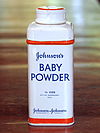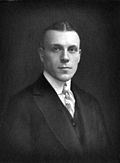Wikipedia:Principle of Some Astonishment: Difference between revisions
presuming EEng wants this to link |
|||
| (One intermediate revision by the same user not shown) | |||
| Line 22: | Line 22: | ||
}} |
}} |
||
{{Quote box|align=center|salign=right|width= |
{{Quote box|align=center|salign=right|width=80% |
||
|Most first drafts can be halved without losing information{{nbsp}}.... Mercilessly prune clutter from your writing; be grateful for all you can throw away{{nbsp}}.... Writing improves, the more unnecessary things are kept out. |source= {{mdash}} If Zinsser actually followed his own advice}} |
|Most first drafts can be halved without losing information{{nbsp}}.... Mercilessly prune clutter from your writing; be grateful for all you can throw away{{nbsp}}.... Writing improves, the more unnecessary things are kept out. |source= {{mdash}} If Zinsser actually followed his own advice}} |
||
| Line 59: | Line 59: | ||
;In the article ''[http://en.wiki.x.io/?oldid=918854639 Live-line working]'': |
;In the article ''[http://en.wiki.x.io/?oldid=918854639 Live-line working]'': |
||
::{{tq|<del>Electricity is hazardous</del>}} |
::{{tq|<del>Electricity is hazardous</del>}} |
||
:Comment: |
:Comment: Shocking. |
||
;In the article ''[http://en.wiki.x.io/?diff=996003117 Joe Biden]'': |
|||
::{{tq|Joseph Robinette Biden Jr. is <del>an American politician and</del> the president-elect of the United States.}} |
|||
:Comment:{{spaces|105}}[[File:Himla med ögonen.gif|frameless|upright=.7]] |
|||
Revision as of 04:53, 24 December 2020
This is an essay on concise, uncluttered writing. It contains the advice or opinions of one or more Wikipedia contributors. This page is not an encyclopedia article, nor is it one of Wikipedia's policies or guidelines, as it has not been thoroughly vetted by the community. Some essays represent widespread norms; others only represent minority viewpoints. |
| This page in a nutshell: The Principle of least astonishment notwithstanding, strive to omit obvious details. |
Principle of Some Astonishment
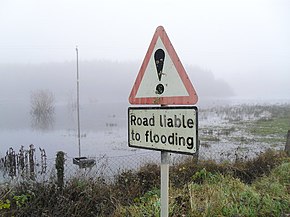
A sentence should contain no unnecessary words, a paragraph no unnecessary sentences, for the same reason that a drawing should have no unnecessary lines and a machine no unnecessary parts.
— William Strunk Jr., The Elements of Style (1918)
In composing, as a general rule, run your pen through every other word you have written; you have no idea what vigour it will give your style.
Most first drafts can be cut by 50% without losing any information .... Look for clutter in your writing and prune it ruthlessly. Be grateful for everything you can throw away .... Writing improves in direct ratio to the number of things we can keep out of it that shouldn't be there.
Most first drafts can be halved without losing information .... Mercilessly prune clutter from your writing; be grateful for all you can throw away .... Writing improves, the more unnecessary things are kept out.
— If Zinsser actually followed his own advice
Perfection is finally attained not when there is no longer anything to add, but when there is no longer anything to take away.
— Antoine de Saint-Exupéry, Wind, Sand and Stars (tr. Lewis Galantière)
I have made this letter longer than usual, only because I have not had the time to make it shorter.
— Blaise Pascal, Lettres provinciales no. 16 (1657)
Some writers tend to overuse quotations.
Portions of this page are best viewed in desktop mode. Mobile readers, click here.
Sometimes editors clutter their prose with pedestrian details that the reader likely already knows or would naturally assume. Rather than informing readers, this wastes their time and dulls their attention. The following are examples of articles belaboring the routine and obvious, at times painfully:

- In the article Pick-up sticks:
-
Each piece in the game also has a point value, with more challenging pieces being worth more.
At the end of play, points are tallied up and the pieces can be thrown again or stored in a container for another use.
- Comment: Of course the points are tallied up at the end of play. Of course we can either play again or put the game away "in a container". (If the rules said to ignore the score sheet at the end, then called for players to burn the game pieces or use them to commit ritual suicide, THAT would be worth mentioning.)
- In the article Notre-Dame de Paris fire:
-
Some lead joints in stained glass windows melted
in the heat of the fire.
- Comment: DUH.
- In the article Live-line working
-
Electricity is hazardous
- Comment: Shocking.
- In the article Joe Biden
-
Joseph Robinette Biden Jr. is
an American politician andthe president-elect of the United States.
- Comment:

- In the article San Francisco Zoo tiger attacks:
-
They created a distraction which caused the tiger to turn towards the officers, who shot and killed it.
After the shooting,officials removed Tatiana's head, paws, tail and gastric contents for examination.
- Comment: Removing the tiger's head before shooting it, assuming you could somehow manage that, would presumably have rendered the shooting superfluous.
- In the article US Airways Flight 1549:
- Comment: Of course it was recorded, otherwise how would we know it?
- Comment: The word quickly is superfluous, because our readers' innate cunning will inform them that controllers generally act with dispatch in such situations. (Had they instead been lackadaisical, THAT would be worth mentioning.)
- Comment: The part from "signalling his intention ..." on is probably unnecessary, because our readers aren't mentally defective. They will conclude without being told that when Sullenberger said "We can't do it ... We're gonna be in the Hudson", he's hinting that (a) he's going to land on the Hudson and (b) he's taking this unconventional step because more orthodox landing sites are out of reach. (Had he instead done it because he wanted a bath, THAT would be worth mentioning.)
- Comment: The immediately bit seems unnecessary. (Had the captain made a cup of tea before ordering "Evacuate!", THAT would be worth mentioning.)
- Comment: If the fire chief, seeing people crowded onto the wings of a sinking airliner, had radioed, "False alarm – no big deal", THAT would be worth mentioning.
- In List of American Airlines accidents and incidents:
-
October 28, 2016: American Airlines Flight 383, a Boeing 767-300ER flying from Chicago to Miami, was accelerating for takeoff when the right engine
failed and erupted in flamescaught fire.
- Comment: You don't have to be a pilot to know that an engine in flames has failed.
The crew aborted the takeoff
and initiated an emergency evacuation.
- Comment: They didn't taxi back to the gate with an engine on fire? You amaze me!
- In the article Charles Whitman:
-
Whitman was reportedly the youngest person
in the worldever to become an Eagle Scout at that time.
- Comment: Are people becoming Eagle Scouts elsewhere than "in the world"? Perhaps on Mars?
- In the article University of California, Berkeley:
-
UC Berkeley researchers along with Berkeley Lab have discovered or co-discovered 16 chemical elements
of the periodic table– more than any other universityin the world.
- Comment: See prior item.
- In the article Club of Rome:
-
The Club of Rome raised considerable public attention with its report Limits to Growth, which has sold 30 million copies in more than 30 translations, making it the best-selling environmental book in
worldhistory.
- Comment: I think you see where I'm going with this.
- In some proposed text for the article Apollo 11:
-
On July 23, the last night before splashdown
on Earth, the three astronauts made a television broadcast
- Comment: Ditto.
- In the article Saving Private Ryan:
-
In Washington, D.C, General George Marshall is informed that three of the four Ryan brothers have been killed within the last week, and that their mother is about to be notified
of their deaths.
- Comment: Lest readers imagine they were notifying her that she'd won the Pillsbury Bake-Off.

- In the article Citrus juice:
-
The most commonly consumed type of citrus juice is orange juice
, which as the name implies, is extracted from oranges.
- Comment: But then baby powder isn't extracted from babies, I suppose.
- In the article Stone's representation theorem for Boolean algebras:
-
The theorem was first proved by Marshall H. Stone (1936)
, and thus named in his honor.
- Comment: And here I thought it was proved by Marshall H. Stone but named for some other Stone.
New York City | |
|---|---|
 Clockwise, from top: Midtown Manhattan, Times Square, the Unisphere, the Brooklyn Bridge, Lower Manhattan with One World Trade Center, Central Park, the headquarters of the United Nations, and the Statue of Liberty |
- Multiple choice: In what article does the infobox at right appear?
- (A) New York State
- (B) New York County
- (C) New York CITY <== hint
- (D) New York University
- In the article Glenn Miller:
-
On December 15, 1944, Miller was to fly from the United Kingdom to Paris,
France,to make arrangements to move his band there.
- Comment: So not Paris, Texas.
- In the article Irish Boundary Commission:
-
The Irish Boundary Commission
was a commission whichmet in 1924–25 to decide on the precise delineation of the border between the Irish Free State and Northern Ireland.
- Comment: So ... the commission was a commission?
- In the article Donald Trump:
-
He signed
tax cutlegislation which cut tax rates for individuals and businesses.
- Comment: A sax player who plays saxes, a fax machine that sends faxes, a tax cut that cuts taxes. (Just whose taxes is another question.)
- In the article Society for the History of Alchemy and Chemistry:
-
The Society for the History of Alchemy and Chemistry
is a society devoted to the history of alchemy and chemistry. The Societywas founded as the Society for the Study of Alchemy and Early Chemistry in 1935.
- Comment: Surprise!
- In the article Hardcore Henry:
-
After she replaces a missing arm and leg with
hi-techcybernetic prostheses, mercenaries led by the psychokinetic Akan raid the ship.
- Comment: Are there low-tech cybernetic prostheses?
- In the article Bunk bed:
-
The bunk or bunks above the lowest one may have rails to keep the user from rolling out
and falling to the floorwhile sleeping.
- Comment: For those innocent of the workings of gravity.
- In the article 1257 Samalas eruption
-
Very large volcanic eruptions can cause destruction close to the volcano ...
- Comment: For those innocent of the workings of volcanoes. (This is the least of what's wrong with this passage. Follow the link – if you dare!)
- In the article Truth or Consequences, New Mexico:
-
Hot Springs officially changed its name on March 31, 1950, and the program was broadcast from there the following evening
, April 1
- Comment: For those innocent of the workings of the calendar.
- In the article Battle of Tali-Ihantala:
-
On June 28, air activity was high on both sides as Finnish bombers and German Stukas pounded the Soviet formations.
The Soviet Air Force also attacked from the air and hit the staff of the Finnish Armored Division hard with bombers from the Soviet 276th Bomber Division.and the Soviet 276th Bomber Division hit the Finnish troops hard.
- Comment: These bombers attacked from the air, you say?
- On the dabpage Horváth
-
The surname "Horvat",
without the "h"still exists and is the most common surname in Croatia or the Croatian diaspora.
- Comment: No comment.
- In the article Chloe:
-
Chloe (also Chloë, Chloé) is a feminine name
for girls.
- Comment: There really should be more feminine names for boys and masculine names for girls.
- In the article Henry Riggs Rathbone:
-
Rathbone
successfullygraduated from Phillips Academy in 1888, from Yale University in 1892, and from the Law Department at the University of Wisconsin in 1894.
- Comment: Graduations are usually successful (except of course a graduation from Yale, which by definition is the first in a lifelong string of degradations).
- In the article Stokes Croft:
-
Stokes Croft is
the name ofa road in Bristol, England.
- Comment: An earlier version read
Stokes Croft is what the name of a road in Bristol, England is called.
- In the article Distomo
-
The aluminum producing companyAluminium of Greece has its production facilities in the coastal village Agios Nikolaos.
- Comment: Ha! Obviously these people don't know the difference between aluminum and aluminium.
- In the article Caribou, Maine
-
The Caribou Public Library is a Carnegie library. Designed in the Romanesque Revival style by local architect Schuyler C. Page, it was built in 1911-1912 with a $10,000 grant
from industrialist Andrew Carnegie.
- Comment: Is there a Carnegie library that Andrew Carnegie did not finance? Or was there some other heretofore unknown Carnegie financing American libraries with whom he might be confused?
- In the article Alice Herz-Sommer
-
She lived for 40 years in Israel, before migrating to London in 1986, where she resided until her death, and at the age of 110 was the world's oldest known Holocaust survivor until Yisrael Kristal was recognized as such. Kristal
was also a Holocaust survivor, andwas born two months before Herz-Sommer.
- Comment: For readers with short-term memory deficits.

- In the article Turpin case
-
From 1988 to 2015, they had
13 children total;ten daughters and three sons.
- Comment: To save our readers mental strain.
- In the article Soyuz-FG
-
... resulted in the destruction of the rocket. The crew, NASA astronaut Nick Hague and Russian cosmonaut Aleksey Ovchinin, escaped safely
and successfully.
- Comment: Whatever that means.
- In the article Trinity Cathedral, Saint Petersburg
-
About four hours after the blaze broke out, one of the three remaining cupolas had been damaged but the fire was contained.
A department spokesman later confirmed that the fire had been extinguished.
- Comment: Lest the reader imagine that it burns to this day.
- In the article Adele Spitzeder
-
Officially founded shortly afterwards in 1869, the "Spitzedersche Privatbank"
(English: Spitzeder Private Bank)quickly grew from an insider tip to a large company.
- Comment: Thank you. I was completely at sea.
- In the article The Owl and the Pussycat
-
Portions of an unfinished sequel, "The Children of the Owl and the Pussycat" were published first posthumously, during 1938.
How the pair procreated is unspecified.
- Comment: We're talking about children's literature, after all.
- In the article Turner syndrome
-
Turner syndrome is not usually inherited
from a person's parents.
- Comment: And certainly not from their rich uncle.
- In the article Earthquake weather
-
Aristotle proposed in the 4th century BC that earthquakes were caused by winds trapped in
subterraneancaves.
- Comment: Extraterrestrial caves would have made for a more surprising theory.
- In the article Jascha Heifetz:
-
The incident made headlines
in the pressand Heifetz defiantly announced that he would not stop playing the Strauss.
- Comment: Yeah, that's usually where headlines appear.
Crime and its detection
- In the lead of Isabella Stewart Gardner Museum theft:
-
Once inside, the pair
revealed their true intentions,tied up the guards, and spent over an hour stealing art from the museum's collection, which they loaded into their vehicle.
- Comment: The guards probably sensed their visitors' "true intentions" around the time they got tied up, and our readers will make the same inference vicariously. Furthermore, in this modern age most readers will envision art thieves as having a vehicle at the ready. (Had they absconded via public transport, or summoned an Uber, THAT would be worth mentioning.)
- In the article University of Texas Tower Shooting:
-
He then drove to a hardware store, where he purchased a Universal M1 carbine, two additional ammunition magazines and eight boxes of ammunition, telling the cashier he planned to hunt wild hogs. At a gun shop he purchased four further carbine magazines, six additional boxes of ammunition, and a can of gun cleaning solvent. He then drove to Sears, where he purchased a Sears Model 60 12 gauge semi-automatic shotgun before returning home
with his purchases.
- Comment: If he'd bought all that stuff and then left it at the store, THAT would be worth mentioning.
- In the article Murder of Jo Cox:
| Murder of Jo Cox | |
|---|---|
| Location | Market Street, Birstall, West Yorkshire, England |
| Date | 16 June 2016 |
Attack type | Shooting, stabbing |
| Weapons | |
| Deaths | 1 |
| Perpetrator | Thomas Mair |
He witnessed the assailant stab Cox,
who fell to the ground, before shooting her and stabbing her againshoot her, then stab her again. The attackerleft the scene, butwas pursued by an eyewitness whofollowed himand telephoned police to describe his locationidentified him to police.Armed police officers attended the incident, and arrested a suspect.
- Comment: There's a lot to say about this one.
who fell to the ground: Persons stabbed and shot, then stabbed again, usually go down. (Extra points for the ambiguous suggestion that the witness may have shot and stabbed the victim.)left the scene: If the shooter/stabber had stuck around, THAT would be worth mentioning.- was pursued by an eyewitness
who followed him: That's what pursuers do. - telephoned police
to describe his location: Usually people calling for help give the location. Armed police officers attended the incident: Even in law-abiding, Queensberry-Rules, you-got-me-copper-fair-and-square England, readers will imagine that amongst officers dispatched to the shooting/stabbing of a Member of Parliament, at least some will be armed with more than their charming accents and unfailing courtesy.and arrested a suspect: That's what happens when an eyewitness points out the gunman. Had police let him off with just a stern talking-to, THAT would be worth mentioning.
- As for the infobox, unless told otherwise readers will assume that a shooting/stabbing will have involved a gun and a knife.
- In the article Apartheid:
-
On 6 September 1966, Verwoerd was fatally stabbed at Parliament House by parliamentary messenger Dimitri Tsafendas
, who was arrested and quickly imprisoned.
- Comment: See last bullet[1] above.
- In the article Allard K. Lowenstein:
-
On March 14, 1980 Lowenstein was shot in his Manhattan office by Sweeney, who was mentally ill and believed that Lowenstein was plotting against him. Sweeney then calmly waited for the police to arrive
and arrest him.
- Comment: [Left as an exercise for the reader]
- In the article Death of Elisa Lam:
-
On the morning of February 19, an employee went to the roof, where four 1,000-gallon water tanks provided water pumped from the city's supply, to the guest rooms, a kitchen, and a coffee shop downstairs. In one of them, he found Lam's body, floating face up a foot below the water surface.
Police responded.
- Comment: [Left as an exercise for the reader]
- In the article University of Alabama in Huntsville shooting:
-
During the course of a routine meeting of the biology department attended by approximately 12 people, Amy Bishop, a biology professor at the university, stood up and began shooting those closest to her with a Ruger P95 handgun.
Bishop was suspended without pay retroactively on the day of the attack.
- Comment: Even academic freedom has its limits, I guess.
- In the article Rodney Alcala
-
Her murder
would remain unsolved until itwas connected to Alcala in 2011.
- Comment: Murders usually remain unsolved until they're solved. See also WP:INTOTHEWOULDS.
- In the article Ted Bundy:
-
He broke through the ceiling into the apartment of the chief jailer—
who was out for the evening with his wife—changed into street clothes from the jailer's closet, and walked out the front doorto freedom.
- Comment: While it's nice to know a busy chief jailer still has time for his spouse, absent mention of a confrontation the reader's common sense will tell him that no one was home. (Had Mrs. Turnkey helped Bundy pick out a tie, or had Bundy gone back to the jail to turn himself in, THAT would be worth mentioning.)
- In the article Seth Black (serial killer):
-
At the request of Scottish detectives, the Metropolitan Police
conducted a search ofsearched Black's Stamford Hill lodgingsto determine whether any incriminating evidence existed at Black's address.
- Comment: Yes, well, that's usually what they're trying to determine. (And click the link for a surprise.)
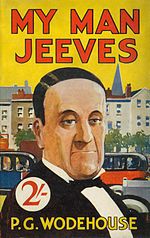
- In the article Eric Muenter:
-
Morgan lunged at his attacker and tackled Muenter to the ground as he fired two rounds into Morgan's groin and thigh. Morgan's butler finished subduing Muenter, beating him senseless with a lump of coal. Morgan quickly
summoned a doctor andrecovered, returning to work on August 14.
- Comment: If financier J.P. Morgan got shot in the groin and didn't summon a doctor, or summoned him other than "quickly", THAT would be worth mentioning. (Kudos to the resourceful butler.)
- In the article Lindbergh kidnapping:
-
Taking a gun, Lindbergh went around the house and grounds with butler Olly Whateley; they found impressions in the ground under the window of the baby's room and pieces of a cleverly designed wooden ladder. They also found a baby's blanket. Whateley telephoned the Hopewell police department
to inform them of the missing child.
- Comment: Not just to say hello?
- In the article Assassination of John F. Kennedy
-
President Kennedy's blood-stained jacket, shirt and tie
worn during the assassinationare stored in the National Archives facility in College Park, Maryland.
- Comment: So not from that time he cut himself shaving.
The gun with which Ruby
shot andkilled Oswald, which came into the possession of Ruby's brother Earl, was sold in 1991 for $220,000.
- Comment: The reader will assume, unless told otherwise, that the gun was not used to bludgeon Oswald to death.
- In the article Jodie Foster
-
While at Yale, Foster also had other stalkers, including a man who planned to kill her but changed his mind after watching her perform in a college play.
The experience was difficult for Foster.
- Comment: Snowflake.
Capacious captions for unerring identification
| In the article Assassination of Abraham Lincoln: |
In the article Horst Wessel: |
In the article The Wizard of Oz (1939 film): |
 |
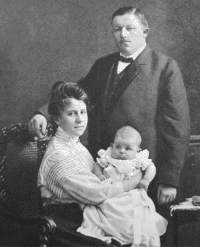 |
Bert Lahr |
| It's a common misconception that the man with the gun is Mrs. Lincoln. |
You don't say! | The word "unnecessary" hardly does justice. Not a bad case
of hirsutism? |
| Various views from Donald Trump: | In the article The Pentagon: | |
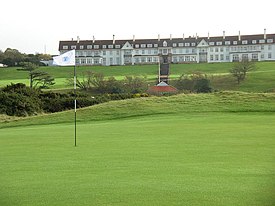 |
 |
 |
| The reader will know without being told that this is a "view". |
We're safe in assuming that the reader will intuit that this "view" shows a "crowd". |
Thus not some other five-sided megastructure for some reason being shown us in the article The Pentagon. |
| Honoring James Agee: | In the article Theta waves: | Meanwhile, back in Cambridge: |
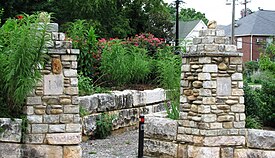 |
 |
 |
| Who would have guessed? | Could have been worse – it could have said "Picture representing an example of an EEG theta wave"? |
Bingo! |
| The lead (and only) image in Twist tie: | In the article The Desire of Ages: | In the article UC Berkeley School of Law: |
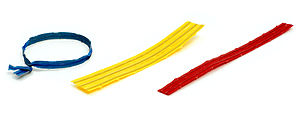 |
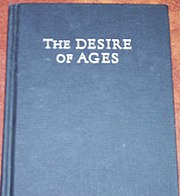 |
 |
| Great example of an image that doesn't need a caption. |
Recently inducted into the Principle of Some Astonishment Hall of Fame – caption and image both. |
I weep. |
| In the article Boston Consolidated TRACON (whatever that is): |
The lead image for CNN International: |
The lead image for Earth: | ||||||||||||||||
 |
|
| ||||||||||||||||
| No shit, Sherlock. (Turns out this is the logo for all CNN brands, not just CNN International – an example of the impulse to add the obvious leading, instead, to addition of the inaccurate.) | ||||||||||||||||||
| And here I thought they had a giant indoor lawn, miniature building-within-a-building, and artificial sky. |
Earth. Yes, Earth. Planet Earth. The lead image in the article Earth. | |||||||||||||||||
| In the article Elizabeth II: |
In the article Senghenydd colliery disaster: |
In the article Harry Elkins Widener: | ||||||||||||||
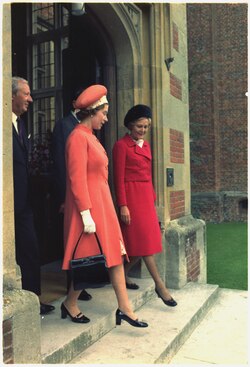 Edward Heath. (Apparently we're on our own for Pat Nixon vs. the Queen.) |
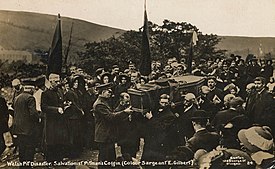 |
| ||||||||||||||
 | ||||||||||||||||
| In the article Chuck Connors: |
In the article Scottish National Antarctic Expedition: |
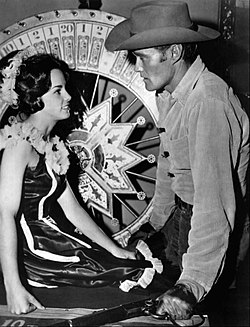 |
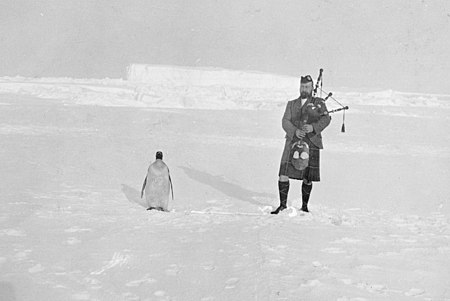 |
| The one with the breasts and the hairdo is Edward Heath. |
Bearing in mind that left and right are reversed south of the equator. |
- An image in Leverett House

- Comment: If the library were invisible, THAT would be worth mentioning.
Special section on modes of exit and ancillary details of death
- In the article Coniston Water:
-
Campbell was
killed instantly on impact whendecapitated by the K7's windscreen.
- Comment: For those innocent of the workings of decapitations.
- In the article Murder of Deborah Linsley:
-
She sustained eleven stab wounds to the face, neck and abdomen, of which at least five were to the area around the heart ... The coroner highlighted that, although passengers reported hearing "a commotion", nobody investigated.
A verdict of unlawful killing was returned.
- Comment: If the verdict had been suicide, THAT would be worth mentioning.
- In the article John Wayne Gacy:
-
Gacy conned Butkovich into allowing his wrists to be cuffed behind his back, at which point Gacy strangled him
to deathand buried his body under the concrete floor of his garage ... Mowery was strangledto deathand buried in the northwest corner of the crawl space ... Both Winch and Boling were strangledto deathand buried in the crawl space.
- Comment: The reader will conclude, unless told otherwise, that someone strangled and buried probably died in between.
- In the article Lyndon B. Johnson:
-
At approximately 3:39 p.m. Central Time on January 22, 1973, Johnson suffered a massive heart attack in his bedroom. He managed to telephone the Secret Service agents on the ranch, who found him still holding the telephone receiver
in his hand.
- Comment: I'm trying to imagine the alternatives.
- In the article Grace Kelly:
-
Rainier, who did not remarry, was buried alongside her
following his deathin 2005.
- Comment: Had Prince Rainier of Monaco been buried alive, THAT would be worth mentioning.
- In the article Brooklyn Navy Yard:
-
Many of the prisoners died and were
subsequentlyburied
- Comment: Small mercies.
- In the article Simon Meyer Kuper:
-
On the evening of 8 March 1963, Kuper, who was at home with his wife and daughter, was shot through a window by an unknown assailant. He died
of his injuriestwelve days later.
- Comment: If he was shot by an unknown assailant but died twelve days later on being surprised by a train, THAT would be worth mentioning.
- In the article James Sisnett:
-
Sisnett died in his sleep
of natural causeson 23 May 2013, at the age of 113 years, 90 days.
- Comment: Had the 113-year-old man died in his sleep not of natural causes, THAT would be worth mentioning.
- In the article Murder of Kristine Fitzhugh:
-
Music teacher Kristine Fitzhugh (born 1947
–2000) was murdered on May 5, 2000 in her home in Palo Alto, California.
- Comment: Obviously.
- In the article Karen Carpenter:
-
Paramedics found her heart beating once every 10 seconds. She was taken to nearby Downey Community Hospital
for treatment.
- Comment: Thanks for clarifying.
- In the article Faylaka Island attack:
-
he was ultimately mortally wounded
and subsequently died.
- Comment: Quelle surprise.
- In the article Gary M. Heidnik:
-
Heidnik was executed by lethal injection on July 6, 1999, at State Correctional Institution – Rockview in Centre County, Pennsylvania. His body was
latercremated.
- Comment: Gosh, I hope so.
- In the article Roy L. Dennis:
-
His body was donated to UCLA Medical Center
after he died.
- Comment: Ditto.
- In the article Miguel Serrano
-
He remained in contact with neo-Nazis elsewhere
in the worldand gave interviews to various foreign far-right publicationsprior to his death.
- Comment: Ditto.
- In the article Joe Biden
-
Before his death,Beau had been widely seen as the frontrunner for the 2016 Democratic nomination for governor of Delaware.
- Comment: [3] notwithstanding.
- In the article Jean de Florette
-
The film starred three of France's most prominent actors – Gérard Depardieu, Daniel Auteuil, who won a BAFTA award for his performance, and Yves Montand in one of his last roles
before his death.
- Comment: Let's see. Um... Ditto?
- In the article Wiley Post
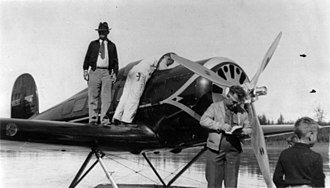
Comment: Ditto. Or maybe they'd already died and Dr. Frankenstein reanimated them.

Comment: If death had been a consequence of his invention operating as expected, THAT would be worth mentioning.
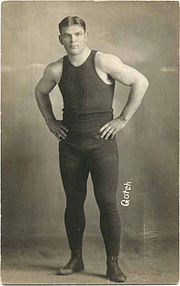
Comment: Or maybe he's stuffed. (The description also says Date: 1918
but we won't go there.)
Principle of Complete Puzzlement
The opposite of the Principle of Some Astonishment is the Principle of Complete Puzzlement: some details don't belong because, though neither obvious nor even predictable, they're completely irrelevant and will puzzle the reader as to the reason for their inclusion.
- In the article Chuck Schumer:
-
In March 2009, Schumer announced his support for same-sex marriage, noting that it "was time". Schumer previously supported civil unions. At a private
risottodinner with gay leaders ...
- Comment: Gay risotto must be especially persuasive.
- In the article Joe Biden:
-
On December 18, 1972, Biden's wife Neilia and their one-year-old daughter Naomi were killed in an automobile accident in Hockessin, Delaware. Neilia Biden's station wagon was hit by a tractor-trailer truck
carrying corn cobsas she pulled out from an intersection.
- Comment: Specifying a killer truck's contents almost always makes death seem undignified no matter the cargo: corn cobs, pork bellies, nail clippers, La-Z-Boys ...
- In the article Trayvon Martin:
-
On the evening of February 26, Martin was walking back alone to the fiancée's house
after purchasing a bag of Skittles and an Arizona iced tea atfrom a nearby convenience store.
- Comment: Somewhat awkward product placements. As The Washington Post put it, "Skittles can't seem to escape political controversies."[2]
- In the article Jim Bell:
-
The ATF stated that it had planted a
covertGPS system in Bell's car and that it had trackedthe movements of his Nissan Maximaits movements in real time.
- Comment: Ditto (with extra points for explaining that the tracking device planted in the suspect’s car was "covert").
- In the article Derek Chauvin:
-
He took food preparation courses at a technical college and worked as a cook at McDonald's and at a local
Italian-Americanrestaurant.
- Comment: So heartburn made him do it? (Linking
[[Italian-American cuisine|Italian-American]]is especially pointless.)
- In the article 2015 Thalys train attack:
-
The remaining passengers were taken to
a gym inArras, where they were searched and identified before being allowed to proceed to Paris.
- Comment: Good to know they could get in some cardio while waiting.
- In the article on courageous flight attendant Barbara Jane Harrison:
- Comment: Even in death a girl should always look her best, I guess. (Personal note: give the article a read; she was truly a hero.)
- In the article Lightning strike:
-
Sixty-eight dairy cows
, all full of milk,died on a farm at Fernbrook on the Waterfall Way near Dorrigo, New South Wales, after being involved in a lightning incident.
- Comment: Perhaps they used all that boiled milk to make cocoa.
- In the article James F. Blake
-
James Fred Blake (April 14, 1912 – March 21, 2002) was the bus driver whom Rosa Parks defied in 1955, prompting the Montgomery Bus Boycott. Born on Apri1 14, 1912,
the same day that the British passenger liner RMS Titanic hit an iceberg...
- Comment: So a bad day all around then.
- In the article Myra (painting)
-
After witnessing the first attack, Jacques Rolé left the exhibition to buy
sixeggsfrom Fortnum & Mason, on the other side of Piccadilly close to the Royal Academy, and threw three or four at the painting before being stopped.
- Comment: Only the best eggs are thrown at the Royal Academy.
Michael Kinsley's "Department of Amplification: William Shawn and the temple of facts" (The New Republic, 1984 – and well worth a read in full) is a pitch-perfect sendup of The New Yorker as "a weekly monument to the proposition that journalism consists of the endless accretion of tiny details":
The June 18 New Yorker has an article about corn. It's the first in what appears to be a series, no less, discussing the major grains. What about corn? Who knows? Only The New Yorker would have the lofty disdain for its readers to expect them to plow through 22,000 words about corn (warning: only an estimate; the TNR fact checkers are still counting) without giving them the slightest hint why. Here is how it starts (after a short introductory poem):
When the New England farmer and botanist Edward Sturtevant retired, in 1887, as head of the New York Agricultural Experiment Station, in Geneva, he left behind a bulky manuscript that was published in 1919, twenty-one years after his death, as "Sturtevant's Notes on Edible Plants." Dr. Sturtevant, who was also a graduate of the Harvard Medical School, but never practiced medicine, had scoured the world’s botanical literature for mentions of all the plants that human beings were known to have eaten (he did not count tree bark, which in times of famine was often one of them), and had come up with among more than three hundred thousand known plant species, two thousand eight hundred and ninety-seven edibles. (Latter-day scientists believe he may have missed as many more.) But, of all these, only a hundred and fifty or so have ever been widely enough consumed to figure in commerce, and of those a mere handful have been of any real consequence.
Now, there are some facts for you. No doubt every single one of them has been checked. You stand in awe as they tumble toward you, magnificently irrelevant, surrounded by mighty commas, mere numbers swollen into giant phrases ("two thousand eight hundred and ninety-seven"), all finally crashing over you with the bravura announcement that nothing you have just read is "of any real consequence." How true this is! From the end of the paragraph, you gaze back on the receding vistas of inconsequence, as far as the eye can see. Even supposing we would like a bit more information about corn, and even supposing we might be relieved to know how many other plants, edible and otherwise, are not going to be discussed in this article, why are we being told about a man whose count apparently was off by half? Even supposing we need to know about Dr. Sturtevant’s book, when it was published, and when the good doctor died, why do we need to know when he retired? Even—stretching it—supposing that we need to know that this gentleman "was also a graduate of the Harvard Medical School," why, oh why, do we have to learn that he "never practiced medicine"? As for the business about tree bark, that has just got to be conscious self-parody.
Remind you of any Wikipedia articles?
Futher reading
- Fowler's Dictionary of Modern English Usage (The Gowers 1965 edition is best.)[3]
- The Complete Plain Words (Gowers again)
References
- ^ So to speak.
- ^ McGregor, Jena (September 22, 2016). "Skittles can't seem to escape political controversies". The Washington Post. Retrieved September 22, 2016.
- ^ In the humble opinion of EEng.


